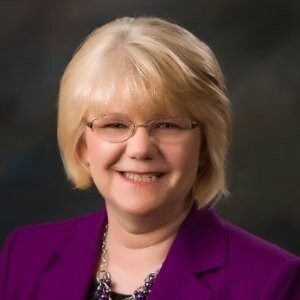Counterbalancing MedPAC’s funding cuts
Contending that America’s skilled nursing facilities (SNFs) are raking in the dough and generating fat profits from Medicare patients, the Medicare Payment Advisory Commission(MedPAC) is ready to tell Congress that any Medicare payment increase for 2010 is unnecessary and should not be implemented.
The Commission, early in December, was set to approve a recommendation from Chairman Glenn M. Hackbarth calling on Congress to “eliminate the update to payment rates for skilled nursing facility rates for fiscal year [FY] 2010.”
In justifying that position, MedPAC consultant Carol Carter said the aggregate Medicare margin for freestanding SNFs was 14.5% in 2007, the seventh consecutive year that the margin was above 10%, and up from 13.1% in 2006. She predicted next year’s margin for serving Medicare patients would be 12.6%.
“Given that margins were higher in 2007 than they were in 2006 and are more than adequate to accommodate cost growth, this continues to be, we think, a reasonable recommendation,” Carter told members of the Commission. Since Congress last year approved an increase for SNFs, Carter said the action would lower program spending from $250 million to $750 million for FY 2010 and by $1 billion to $5 billion over five years—without impacting beneficiaries or providers’ willingness or ability to care for Medicare beneficiaries—since Medicare is considered a “generous” payer as it is.
Word of the coming MedPAC recommendation was met with strong opposition from the Alliance for Quality Nursing Home Care (Alliance) and the American Health Care Association (AHCA), which took the opportunity to link support for the nursing home industry with efforts by the Obama administration to bolster the lagging economy.
They issued a press release warning that failure to adequately fund Medicare, coupled with threats to Medicaid funding resulting from worsening state budget crises, threatens seniors’ continued access to quality care, jeopardizes jobs that are critical in ensuring quality of care, and undermines the overall capacity of the long-term care system since current demographic trends portend greater SNF utilization.
“While we recognize that all Americans will be called upon to sacrifice and support our national priorities, we must be careful not to jeopardize a sector that cares for many low- and moderate-income seniors, and is a source of job creation given the current 100,000 employee vacancies in the long term care sector—especially in direct caregiving positions,” said Bruce Yarwood, AHCA president and CEO.
Yarwood pointed to a recent Lewin & Associates analysis which shows that every dollar invested in a long-term care facility supports about $5 of additional economic activity. “The long-term care sector contributes significantly to the nation’s gross domestic product,” he said, “and plays a vital role in America’s economic health.”
According to Yarwood, “stable” Medicare and Medicaid financing is critical to sustaining patient access to quality nursing home care, and will have a direct, positive impact on the economy by ensuring job growth, new hires, and staff retention. The industry has long contended that Medicare reimbursement rates should compensate for less generous Medicaid payments. The Department of Health and Human Services, however, has not bought into that line of thinking.
According to Alliance President Alan G. Rosenbloom, the long-term care sector supports and is positioned to help President Obama and the new Congress advance systemic healthcare reform while also serving as an effective cornerstone in the effort to boost the economy.
“We are on the same page with the [then] president-elect and Congress that we must finally fulfill the mission of providing patients with quality care at the lowest, most cost-effective rate—across the complete spectrum of care,” Rosenbloom said. “This is one of our sector’s major priorities for 2009 and beyond….”
Rosenbloom urged that the new administration, Congress, and MedPAC should base budget and policy decisions on the true economic conditions facing nursing facilities today. “When assessing the adequacy of Medicare funding for the nation’s nursing facility patients, and making subsequent recommendations to Congress, MedPAC should be obligated, as a matter of basic responsibility, to thoughtfully evaluate the overall economic conditions in which the long-term care sector operates,” he said.
“By ignoring on a wholesale basis the substantial losses nursing homes face due to inadequate Medicaid payments—a gap sure to grow given widening state budget gaps—MedPAC’s posture in regard to a necessary cost of living adjustment is damaging to seniors, puts key long-term care jobs at risk, and undermines the sector’s ability to be a meaningful part of the solution to our current healthcare and economic challenges,” Rosenbloom declared.
Carter, in her December presentation to the Commission, said there is wide disparity in financial performance among SNFs, noting that nonprofit SNFs reported Medicare margins averaging 4%, while for-profit SNFs raked in more than 17%. Moreover, while half of freestanding SNFs had margins at or above 16%, one-quarter was below 5% and one-quarter was at 25% or above. About 18% of SNFs had negative margins, she said. Hospital-based facilities continued to have sharply negative margins, averaging negative 84%.
Carter pointed out that MedPAC has previously recommended linking payments to beneficiary outcomes by establishing a quality incentive payment policy, as well as requiring that patient assessments be conducted at discharge to enable measurement in changes in patients’ functional status. “Over this coming spring and summer,” she said, “we plan to look at the cost of episodes of post-acute care across settings as a way to begin to think about bundled payments for post-acute care. We recognize the improvements in this sector need to be made along a number of dimensions and price is just one piece of that effort.”
Carter also told the Commission that measurements to assess quality of care for freestanding facilities showed that risk-adjusted rehospitalizations have steadily increased since 2000, indicating poor quality, but that risk-adjusted rates of discharge within 100 days were the highest they’ve been since 2000, indicating improved quality.
According to Carter, for-profit facilities had higher community discharge rates than nonprofits, but also had higher potentially avoidable rehospitalizations.
Clearly, once again, the industry will be facing yet another funding challenge from Medicare if MedPAC’s recommendations are eventually accepted by Congress. Whether the new 111th Congress, now strongly controlled by Democrats, and President Obama will understand the need to counterbalance underpayments by Medicaid, remains to be seen.
To send your comments to the author and editors, e-mail gatty0209@iadvanceseniorcare.com.

Robert Gatty has more than 40 years of experience in journalism, politics and business communications and is the founder and president of G-Net Strategic Communications based in Myrtle Beach, South Carolina. He can be reached at bob@gattyedits.com.
Related Articles
Topics: Articles , Facility management , Medicare/Medicaid









